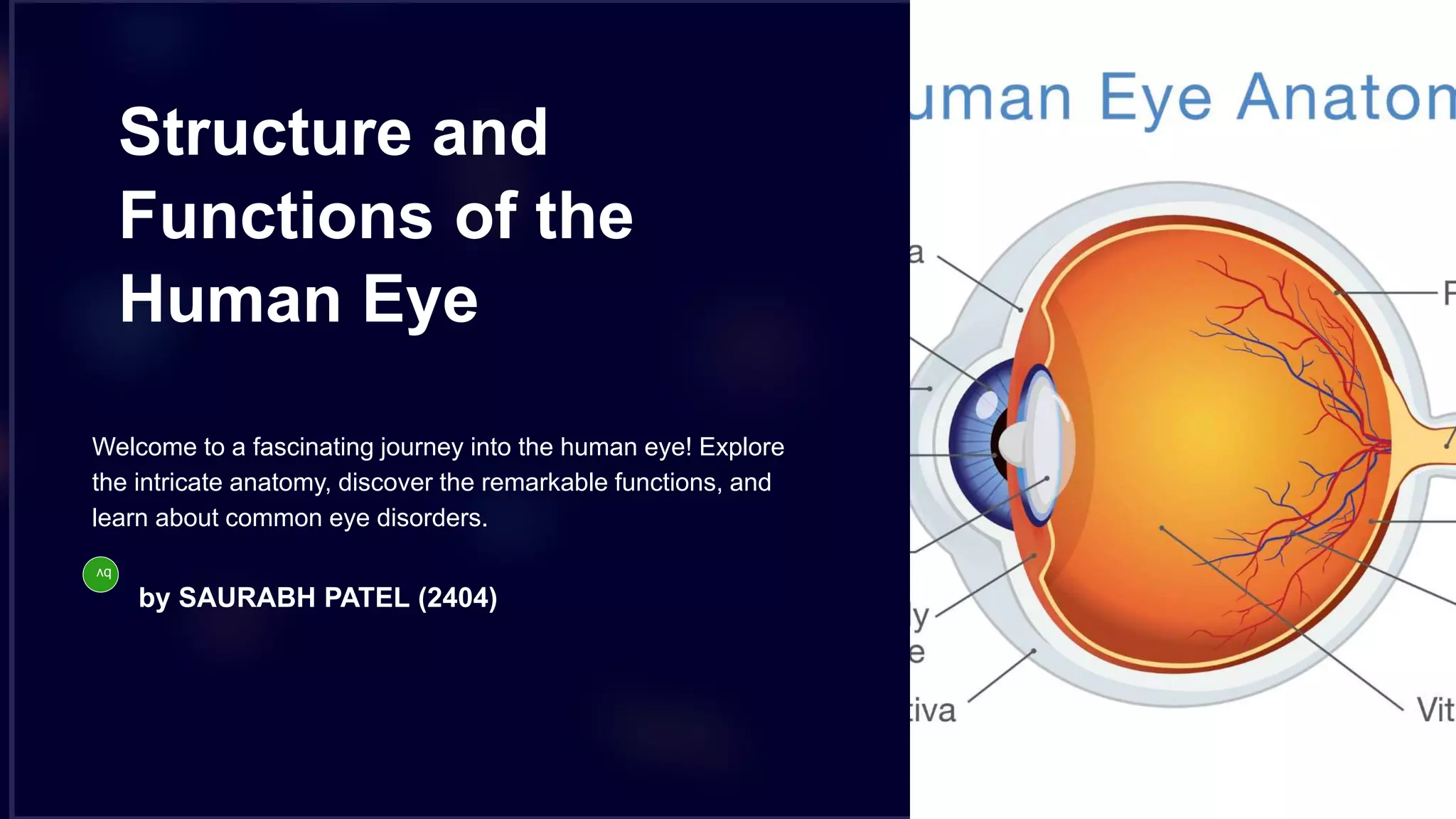The document discusses the anatomy and functions of the human eye. It describes key components of the eye including the cornea, iris, lens, and retina. It explains how light enters the eye and is focused onto the retina to form an image, allowing for vision. The document also discusses common eye disorders like myopia, hyperopia, and presbyopia. It emphasizes the importance of protective eyewear and maintaining eye health through regular exams, healthy habits, and taking breaks when looking at screens.






